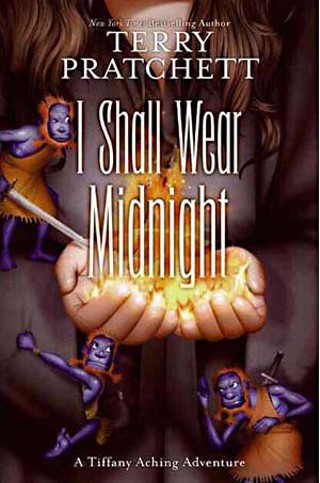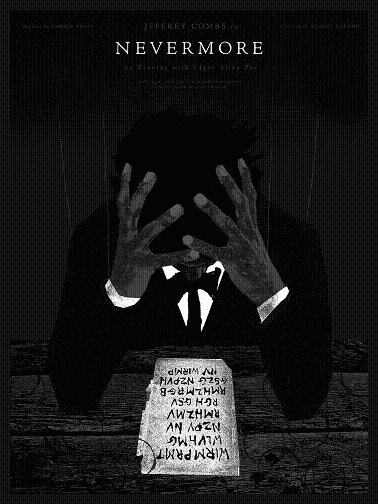 Sometimes there’s no feel-good ending when the underdog stands up to the powers that be, no matter how terrible the injustice. In 2007, former child inmate Joseph Galloway became the face of all the victims at the Texas Youth Commission: The terrible beatings and sexual abuse he suffered at the hands of staff and inmates at the Giddings State School made headlines, and his case turned out to be the first few rounds in a grueling fight to fix a broken state agency. After the police investigations started, big promises were made by lawmakers about fixing TYC and making amends to the thousands of children who had passed through its locked gates.
Sometimes there’s no feel-good ending when the underdog stands up to the powers that be, no matter how terrible the injustice. In 2007, former child inmate Joseph Galloway became the face of all the victims at the Texas Youth Commission: The terrible beatings and sexual abuse he suffered at the hands of staff and inmates at the Giddings State School made headlines, and his case turned out to be the first few rounds in a grueling fight to fix a broken state agency. After the police investigations started, big promises were made by lawmakers about fixing TYC and making amends to the thousands of children who had passed through its locked gates.
All posts by rmw
Interview: TNA in 2008
(A little wrestling flashback here: in 2008, TNA Wrestling was the insurgent pro-wrestling promotion in America. Now it’s all but dead, and just about everyone interviewed here – Booker T., Christian, Robert Roode, and Eric Young – is now with the WWE in some context or other)
Backstage at the TNA Wrestling event at the Travis County Expo Center last Thursday, five-time WCW champion Booker T swept the curtain aside. Twenty minutes earlier, he’d been wiped out by a chair shot delivered by Robert Roode. He’d then stood in the ring and signed autographs with fans. In the dressing room, he grins.
“Another day at the office, baby,” he says before swapping compliments with Roode. The same Roode who tried to crack his skull in the ring.
Interview: Weird Al Yankovic (2010)
 (In 2010, Weird Al visited Austin to play the Fun Fun Fun Fest. It’s not often you get to interview a true cultural icon, but here’s a fragment of my Q&A with him for the Austin Chronicle.)
(In 2010, Weird Al visited Austin to play the Fun Fun Fun Fest. It’s not often you get to interview a true cultural icon, but here’s a fragment of my Q&A with him for the Austin Chronicle.)
Richard Whittaker: When you visited Austin in May to screen your movie UHF, a lot of people were disappointed you didn’t sing.
Weird Al Yankovic: I just felt so terribly bad that they weren’t able to schedule an Austin show for our summer tour that when the opportunity to do Fun Fun Fun Fest came up, I jumped at it. We don’t normally do one-offs. We usually only do shows that are part of an extended tour, but this was something I really wanted to do.
Continue reading Interview: Weird Al Yankovic (2010)
Review: I Shall Wear Midnight by Terry Pratchett
 There’s a moment of sadness with every new Terry Pratchett novel. Since the English comedy-fantasy author’s 2007 announcement that he has Alzheimer’s disease, he’s admitted that each book may be his last. He’s undoubtedly bringing one part of his legacy to a bittersweet conclusion with the final tale of Tiffany Aching, the young witch on the mystical planet called Discworld. Across the first three books in the sequence of young adult novels (The Wee Free Men, A Hat Full of Sky, and Wintersmith), Tiffany went from callow apprentice to respected hag o’ the hills.
There’s a moment of sadness with every new Terry Pratchett novel. Since the English comedy-fantasy author’s 2007 announcement that he has Alzheimer’s disease, he’s admitted that each book may be his last. He’s undoubtedly bringing one part of his legacy to a bittersweet conclusion with the final tale of Tiffany Aching, the young witch on the mystical planet called Discworld. Across the first three books in the sequence of young adult novels (The Wee Free Men, A Hat Full of Sky, and Wintersmith), Tiffany went from callow apprentice to respected hag o’ the hills.
Continue reading Review: I Shall Wear Midnight by Terry Pratchett
Gamefication in Education at SXSW (2016)
(Following on from yesterday’s posting about how IT and games are changing the education world, here’s an interview I did for the Austin Chronicle with Grace Lau, director of VR the Global Nomads Group, a nonprofit dedicated to reducing the barriers of understanding between kids in different nations.)
It’s a small world, but, as the old saying goes, you wouldn’t want to walk it. For centuries, the only way to truly experience another culture was to visit it. Now international travel has never been easier, but it seems too much of the conflict-ravaged world is off-limits to the students most eager to learn about it. For Grace Lau, director of virtual reality for education nonprofit Global Nomads Group, technology can still help bridge the gaps of oceans and borders. She said, “When you put people in front of each other, whether it’s face to face or in the virtual world, we found that they’re able to draw out those natural human connections.”
The purpose of GNG is to make students into global citizens. So far, the nonprofit has linked students in the U.S. to kids in South America, Thailand, Afghanistan, Pakistan, and nations across Sub-Saharan Africa – “places with the largest culture gap between the U.S. and abroad,” said Lau. However, their biggest initiative at the moment is in the Middle East.
The core of this initiative was Project Syria, a collaboration with virtual reality pioneer Nonny de la Peña that connected South Central Los Angeles’ View Park Preparatory Charter High School and Mahatta Community Center in Amman, Jordan. Originally commissioned by the World Economic Forum, this VR tool simulates the experience of being in a conflict zone. Lau said, “Through CGI, Nonny’s team at Immersive Journalism re-created a street bombing in Aleppo, Syria. So with these headsets, the students in L.A. went through what it would be like on that street corner. Then we connected those students with Syrian refugees here in Jordan.”
The Not-So-World Wide Web (2008)
(There’s been a lot of discussion about representation and access on the Internet in the last couple of years, but this piece I wrote for the Austin Chronicle’s SXSW 2008 coverage shows the issues have been debated, especially about the Anglocentric and Americentric nature of Internet culture, for a lot longer than that.)
Back in 1990, when Tim Berners-Lee wrote the code for a browser he called WorldWideWeb, it was supposed to connect everyone. “Its universality is essential,” he later wrote, saying it could “make sense of what we are doing, where we individually fit in, and how we can better work together.” But whose idea of universal? Is it a one-size-fits-all, anything-goes approach, with no restriction on content? Or a tamed Web, where no one can find anything upsetting?
Before content, there is language. The Web was built in English. All those acronyms (http, URL, TCP/IP) mean something in English. Most websites are in English. But an all-English Web can also be an excluding Web. “Providing a service in English only shuts out huge amounts of users,” says Stephanie Booth, Web consultant and writer of Climb to the Stars, one of the first major bilingual blogs. Living in Switzerland, a country with four national languages (German, French, Italian, and Romansh) where many citizens speak conversational English, she is exposed to the complexities of translation on a day-to-day basis. “People may speak enough English to communicate with the man on the street, but it’s not sufficient for them to try and tame new, potentially scary software or services in that language.”
Gamefication in Education at SXSW (2008)
(Gamefication has become the buzzword in education circles, and here’s a SXSW 2008 preview for the Austin Chronicle on those issues.)
The line between educational software and games has always been a blurry one. Now educators and game developers are doing more than just making toys with some redeeming qualities: They’re adapting lessons from gaming into the curriculum, from interactivity in Nintendo’s Wii Sports to cooperative play in Halo 3.
“Games are largely misunderstood,” said Suzanne Seggerman, president of Games for Change. “They are not inherently sophomoric.” G4C introduces activist groups to the educational benefits of situated learning – the cognitive process of learning through doing, or in this case simulated doing. The idea is nothing new. “The U.S. Army has [combat simulator]America’s Army,” Seggerman said, “and it’s their number one recruiting tool. So why shouldn’t nonprofits have access to the same tools?” ‘
She points to the award-winning Darfur Is Dying. It’s a different view of battle to, say, Call of Duty: a deceptively simple online game in which players are Sudanese refugees, avoiding Janjaweed militias while foraging for water. They learn and are inspired by doing, a process she argues has always been part of gaming. “Will Wright has had hundreds of people mailing him, saying they became urban planners because of SimCity,” said Seggerman.
Interview: John Halcyon Styn (2007)
 (In 2007, as part of a package I produced for the Austin Chronicle on the interface of cinema and the Internet, I talked to John Halcyon Styn: a multi-time Webby winner, he made his professional reputation as a business-to-business marketing and branding consultant for an adult Web company running. We talked about what the film industry, especially independent filmmakers, can learn from online porn as a distribution model.)
(In 2007, as part of a package I produced for the Austin Chronicle on the interface of cinema and the Internet, I talked to John Halcyon Styn: a multi-time Webby winner, he made his professional reputation as a business-to-business marketing and branding consultant for an adult Web company running. We talked about what the film industry, especially independent filmmakers, can learn from online porn as a distribution model.)
Richard Whittaker: Why has porn taken to the Web so strongly?
John Halcyon Styn: The adult industry doesn’t have the option to go through traditional channels, so they’ve been forced to innovate. There are not a lot of advertisers who are prepared to subsidize adult content. But they have a product that is so much better suited to get people to pull their wallet out, which is a greater incentive to take risks and try new technology. Video distribution via IP and download on demand are convenient for every part of life but are a godsend for a porn consumer. In the same way the VCR revolutionized our viewing habits and was pushed by the porn consumer who enjoyed the privacy of it, this just takes it to the next beautiful level. It’s a purely personal, private commerce.
Review: Nevermore (2010)
 Technically, Fantastic Fest ended on Thursday: But the final curtain did not fall until Saturday and the last Austin performance of Nevermore, horror icon Jeffrey Combs‘ one-man stage show about the life of Edgar Allan Poe.
Technically, Fantastic Fest ended on Thursday: But the final curtain did not fall until Saturday and the last Austin performance of Nevermore, horror icon Jeffrey Combs‘ one-man stage show about the life of Edgar Allan Poe.
Set in 1848, it presents a pivotal moment in Poe’s life: A year after the death of his wife and muse Virgina, the West Point graduate-turned-poet and author was engaged to essayist Sarah Helen Whitman and seemingly turning a corner in his career and personal life. But what looms over the performance is the dark knowledge for the audience that Poe himself will be dead within two years.
The Future of Film (As Seen in 2007)
(In 2008, I wrote this piece on the future of cinema and the Internet for the Austin Chronicle. So no surprise that some of the prognostications were way off target. However, there’s some early wisdom about the way cinema was changing, including Arin Crumley and Susan Buice getting ahead of the curve on predicting theatrical on demand.)
The Web was going to be a bottomless well of content. No matter what your interest, you could log on and find something to fit your tastes. And go as far as you’d like from there.
There’s a problem with that. Infinite is a big number. Audiences can’t browse online forever. Talented artists and content creators spent more time keeping up with software than actually creating content. Learn HTML; XML comes along. Master Shockwave; here comes Flash. When independent filmmakers finally get online, they’re competing for bandwidth with someone innovating new ways to drop Mentos into Coke.
The old days of a Web campaign for a film attracting audiences on novelty alone are over. According to Henry Jenkins, director of the comparative-media-studies program at MIT and a South by Southwest Interactive 07 speaker, “It’s no longer the case that, if you build it, they will come. If you drop your film on YouTube and do nothing around it, it will get buried under a billion other videos.” Instead, filmmakers are finding success in reaching out to online communities, and firms are developing new Web tools to build and maintain those links.